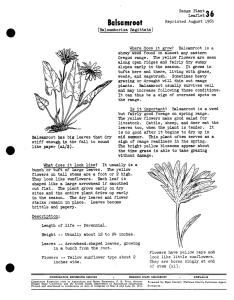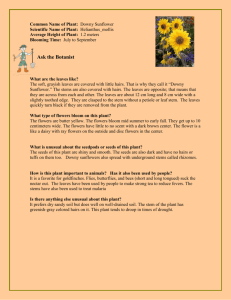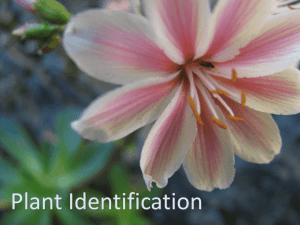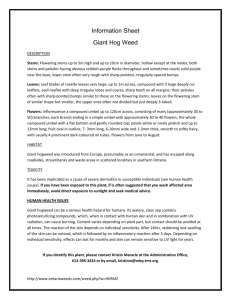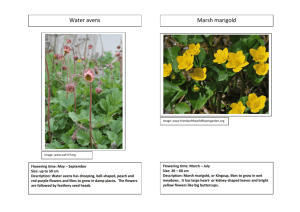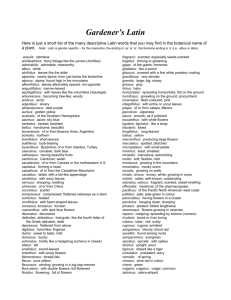Chapter 20
advertisement
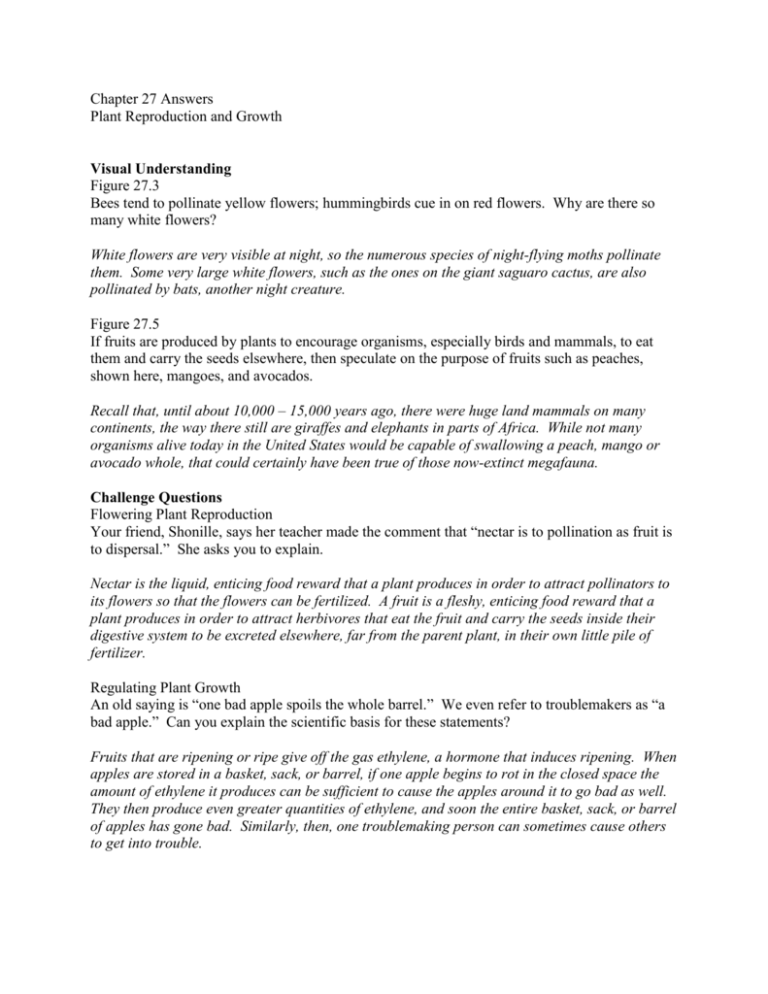
Chapter 27 Answers Plant Reproduction and Growth Visual Understanding Figure 27.3 Bees tend to pollinate yellow flowers; hummingbirds cue in on red flowers. Why are there so many white flowers? White flowers are very visible at night, so the numerous species of night-flying moths pollinate them. Some very large white flowers, such as the ones on the giant saguaro cactus, are also pollinated by bats, another night creature. Figure 27.5 If fruits are produced by plants to encourage organisms, especially birds and mammals, to eat them and carry the seeds elsewhere, then speculate on the purpose of fruits such as peaches, shown here, mangoes, and avocados. Recall that, until about 10,000 – 15,000 years ago, there were huge land mammals on many continents, the way there still are giraffes and elephants in parts of Africa. While not many organisms alive today in the United States would be capable of swallowing a peach, mango or avocado whole, that could certainly have been true of those now-extinct megafauna. Challenge Questions Flowering Plant Reproduction Your friend, Shonille, says her teacher made the comment that “nectar is to pollination as fruit is to dispersal.” She asks you to explain. Nectar is the liquid, enticing food reward that a plant produces in order to attract pollinators to its flowers so that the flowers can be fertilized. A fruit is a fleshy, enticing food reward that a plant produces in order to attract herbivores that eat the fruit and carry the seeds inside their digestive system to be excreted elsewhere, far from the parent plant, in their own little pile of fertilizer. Regulating Plant Growth An old saying is “one bad apple spoils the whole barrel.” We even refer to troublemakers as “a bad apple.” Can you explain the scientific basis for these statements? Fruits that are ripening or ripe give off the gas ethylene, a hormone that induces ripening. When apples are stored in a basket, sack, or barrel, if one apple begins to rot in the closed space the amount of ethylene it produces can be sufficient to cause the apples around it to go bad as well. They then produce even greater quantities of ethylene, and soon the entire basket, sack, or barrel of apples has gone bad. Similarly, then, one troublemaking person can sometimes cause others to get into trouble. Plant Responses to Environmental Stimuli If it is out in the open, trailing ivy grows along the ground and can form dense mats of ground cover. If planted in a hanging pot, the stems dangle down, forming a graceful flow. If ivy is planted next to a building, however, its stems attach to the side of the building and, in time, it will cover the building. What causes this? Ivy is subject to the tropism called thigmotropism; its stems are sensitive to touch. In a not-wellunderstood reaction the stems attach to anything nearby – tree, fence, building, and will grow over it. Over many years some buildings become entirely covered in ivy.


